north dakota
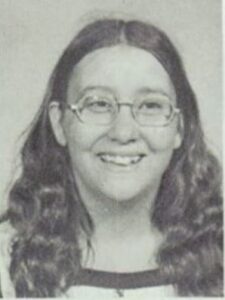
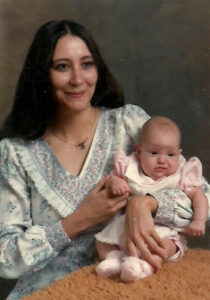 My cousin, Darla Stanko passed away on February 26, 2023, at 63 just years old. As I think of Darla, I remember her laugh, which was just like her mother’s. It was sweet and a little shy, but when they laughed…you laughed, because their laugh was contagious. As kids, we would all go down in Grandma Byer’s basement to play, while the grownups visited upstairs. Grandma’s basement was a little creepy and worked well as a “haunted” house…if the kids liked that sort of thing. Some did and some didn’t. I preferred other games. I think Darla did too. She had asthma and scary stuff could trigger things.
My cousin, Darla Stanko passed away on February 26, 2023, at 63 just years old. As I think of Darla, I remember her laugh, which was just like her mother’s. It was sweet and a little shy, but when they laughed…you laughed, because their laugh was contagious. As kids, we would all go down in Grandma Byer’s basement to play, while the grownups visited upstairs. Grandma’s basement was a little creepy and worked well as a “haunted” house…if the kids liked that sort of thing. Some did and some didn’t. I preferred other games. I think Darla did too. She had asthma and scary stuff could trigger things.
As kids do, we all grew up…quicker than we would ever have dreamed possible. Before long, babies were coming along. I remember talking to Darla once. She told me that without a doubt, the best thing she ever did was JeanAnn, and of that I have no doubt. For a mom to look at the beautiful little baby they have just given birth to…there is no greater honor. Kids are a big part of our lives, and games are a part of kids. JeanAnn told me about the times she and her mom played cards. Their favorite game was Speed…which is a high drama card matching game for two players. It was perfect for them.
The other thing that JeanAnn and her mom loved to do was to spend time jumping on the trampoline in their yard. I can just picture it now, a summer evening in the back yard, just the two girls, jumping and giggling the hours away. Of course, there was also their dog, Nelly with them too. Now Nelly was a different sort of dog. She was very gentle with JeanAnn, but then she was JeanAnn’s guard dog. She was also gentle with Darla too…except for that one time. JeanAnn could make Nelly mad and then point at a new person, and Nelly would go get that person. That was all well and good…until JeanAnn did that to her mom. My guess is that JeanAnn had no idea what was about to take place. Darla saw it coming, and she jumped on the furniture to get away from the guard dog that was now hot on her trail. She almost knocked herself out jumping down. JeanAnn 
 says, “It was great” and maybe it was…for her anyway. Darla…maybe not so much, but I’m sure she laughed about it later.
says, “It was great” and maybe it was…for her anyway. Darla…maybe not so much, but I’m sure she laughed about it later.
Now, for me, possibly the funniest story about Darla’s life was the “fateful” trip to Denver. Darla decided to take her daughter to Denver, and to take her mom, my Aunt Delores Johnson with them. She needed a “navigator” and while I can’t picture my Aunt Dee in that capacity, maybe Darla thought map reading was like breathing…anyone could do it. My thought is, “Have you met your mother?” Anyway, off they went, and to make a long story short, they ended up on a one street in rush hour traffic, going the wrong way!!” Oh yes, that’s the Aunt Dee I know, and I can totally picture that whole situation…once I can stop laughing!!

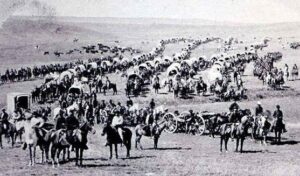 There was so much controversy over the control of the Black Hills. The Indians were told that the White man would stay out of the Black Hills, but when gold was discovered there, all bets were off. Before his defeat at the Battle of Little Big Horn, while he was still a Lieutenant Colonel, George Custer rode with his crew to the Black Hills of South Dakota in search of a location for a fort. That Custer Expedition of 1874 became a defining moment in the story of the Black Hills coming under the control of the United States. Things really got started in 1872, when Secretary of the Interior Columbus Delano, basically set the stage for the expedition to the Black Hills. Delano was responsible for the Sioux territorial rights in the region. Delano sent a letter dated March 28, l872, which stated, “I am inclined to think that the occupation of this region of the country is not necessary to the happiness and prosperity of the Indians, and as it is supposed to be rich in minerals and lumber it is deemed important to have it freed as early as possible from Indian occupancy. I shall, therefore, not oppose any policy which looks first to a careful examination of the subject… If such an examination leads to the conclusion that country is not necessary or useful to Indians, I should then deem it advisable…to extinguish the claim of the Indians and open the territory to the occupation of the whites.”
There was so much controversy over the control of the Black Hills. The Indians were told that the White man would stay out of the Black Hills, but when gold was discovered there, all bets were off. Before his defeat at the Battle of Little Big Horn, while he was still a Lieutenant Colonel, George Custer rode with his crew to the Black Hills of South Dakota in search of a location for a fort. That Custer Expedition of 1874 became a defining moment in the story of the Black Hills coming under the control of the United States. Things really got started in 1872, when Secretary of the Interior Columbus Delano, basically set the stage for the expedition to the Black Hills. Delano was responsible for the Sioux territorial rights in the region. Delano sent a letter dated March 28, l872, which stated, “I am inclined to think that the occupation of this region of the country is not necessary to the happiness and prosperity of the Indians, and as it is supposed to be rich in minerals and lumber it is deemed important to have it freed as early as possible from Indian occupancy. I shall, therefore, not oppose any policy which looks first to a careful examination of the subject… If such an examination leads to the conclusion that country is not necessary or useful to Indians, I should then deem it advisable…to extinguish the claim of the Indians and open the territory to the occupation of the whites.”
It was the beginning of major trouble in the Black Hills, because Delano’s remarks were in direct contradiction of terms defined in the 1868 Laramie Treaty which states: “…no persons except those designated herein … shall ever be permitted to pass over, settle upon, or reside in the territory described in this article.” Delano singlehandedly broke the treaty with the Indians and blew up the situation in the Black Hills. Basically, he thought the Indians wouldn’t see the value in the Black Hills that he saw…gold. Well, the gold didn’t interest them, but the land did. Delano stated that the major reasons for exploration was that “Americans and representatives in Dakota Territory felt that there was too much land allotted for too few Sioux (estimated to number from 15 to 25,000 in 1872); and the existence of mineral and natural resources in the area.”
The American economy wasn’t in good shape at that time. Experts think that the Delano letter and other previous reports and rumors regarding the wealth of the Black Hills were the real forces behind the expedition of the following year. General Alfred H. Terry of the Headquarters of the Department of Dakota in Saint Paul formally ordered the exploration of the Black Hills on June 8, 1874. Enter Custer…who was told to look for a site for Fort Abraham Lincoln, Dakota Territory, which ended up being located 7 miles south of Mandan, North Dakota, not in the Black Hills at all. Of course, the fort was likely to be used to protect the settlers and prospectors who were expected to flood the Black Hills. Custer’s expedition departed on July 2, 1874. Custer’s expedition, which was a mile long, included Custer, wearing a buckskin uniform, on his favorite bay thoroughbred at the head of ten Seventh Cavalry companies, followed by two companies of infantry, scouts, and guides. In all they were more than 1000 troops and one black woman, Sarah Campbell, the expedition’s 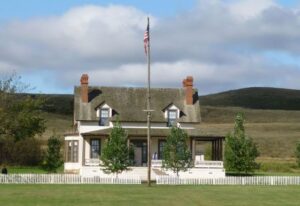 cook. The 110 canvas-topped wagons were pulled by six mule teams. In addition, they had horse-drawn Gatling guns and cannons, and three hundred head of cattle brought along to provide meat for the troops. The expedition even had a “Scientific corps” with them, which included a geologist and his assistant, a naturalist, a botanist, a medical officer, a topographical engineer, a zoologist, and a civilian engineer. Two miners, Horatio N. Ross and William T. McKay, were attached to the scientific corps. In addition, Custer brought a photographer, newspaper correspondents, the company’s band, hunting dogs, the son of US President Ulysses S. Grant, as well as his younger brothers, Tom and Boston. All to look for a site for a fort!!!
cook. The 110 canvas-topped wagons were pulled by six mule teams. In addition, they had horse-drawn Gatling guns and cannons, and three hundred head of cattle brought along to provide meat for the troops. The expedition even had a “Scientific corps” with them, which included a geologist and his assistant, a naturalist, a botanist, a medical officer, a topographical engineer, a zoologist, and a civilian engineer. Two miners, Horatio N. Ross and William T. McKay, were attached to the scientific corps. In addition, Custer brought a photographer, newspaper correspondents, the company’s band, hunting dogs, the son of US President Ulysses S. Grant, as well as his younger brothers, Tom and Boston. All to look for a site for a fort!!!
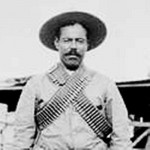 One day in mid 1916 or early 1917, my great uncle, John Spare, who would marry my great aunt, Mina Schumacher on January 8, 1921, was involved in an altercation along the Mexican border, while he was serving in Company B of the North Dakota National Guard. John had enlisted on June 30, 1916 at the age of just 17 years, and his company was assigned to the United States/Mexican border, as we were in the middle of a war with Mexico…really this was border patrol, because there were some pretty dangerous characters running around Mexico, terrorizing the people. One of the most notorious was Pancho Villa. The viciousness of José Doroteo Arango Arámbula…better known as Pancho Villa, was well documented. In a story told by a survivor of his first raid on March 7, 1916, the ruthlessness of this villain is made clear. Pancho Villa and 600 of his renegade followers rode into Columbus, Mexico (population 350) at four o’clock on that morning, riding horses and mules stolen from the Calvary at Camp Turlong just across the border. The camp was the headquarters for the 13th Calvary, and there were about 120 soldiers stationed there. Pancho and his men stole everything of value in the town, and set fire to all its buildings. Many merchants were killed, but the townspeople resisted so strongly that Pancho lost 100 men. He nevertheless, escaped to ride again and continue his raids on both sides of the border.
One day in mid 1916 or early 1917, my great uncle, John Spare, who would marry my great aunt, Mina Schumacher on January 8, 1921, was involved in an altercation along the Mexican border, while he was serving in Company B of the North Dakota National Guard. John had enlisted on June 30, 1916 at the age of just 17 years, and his company was assigned to the United States/Mexican border, as we were in the middle of a war with Mexico…really this was border patrol, because there were some pretty dangerous characters running around Mexico, terrorizing the people. One of the most notorious was Pancho Villa. The viciousness of José Doroteo Arango Arámbula…better known as Pancho Villa, was well documented. In a story told by a survivor of his first raid on March 7, 1916, the ruthlessness of this villain is made clear. Pancho Villa and 600 of his renegade followers rode into Columbus, Mexico (population 350) at four o’clock on that morning, riding horses and mules stolen from the Calvary at Camp Turlong just across the border. The camp was the headquarters for the 13th Calvary, and there were about 120 soldiers stationed there. Pancho and his men stole everything of value in the town, and set fire to all its buildings. Many merchants were killed, but the townspeople resisted so strongly that Pancho lost 100 men. He nevertheless, escaped to ride again and continue his raids on both sides of the border.
In haste, the United States sent soldiers to guard the borders. Unfortunately they were not well equipped, 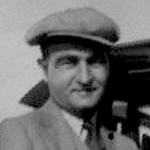 because of the unpreparedness of the military machine at the time. Many of those men, including my great uncle’s company were sent down there without ammunition, and told that those who had ammunition would fight an attack if it came, while the others would dive under the bridge until the attack was over. They neglected to tell them that none of them had ammunition, and the men did not know that until all of them jumped under the bridge at the same time. It was then that the horrible truth was revealed. The hope, apparently, was to make Pancho think this was a large army to be reckoned with, in the hope that they would not try to attack them. They sorely misjudged the ruthlessness of this man, but the good news was that Pancho and his men were already in a gun fight with the 13th Calvary, so they took little notice of this small band of men hiding under the bridge, hoping that the villain and his men didn’t circle around and come back. I don’t know how long Great Uncle John was stationed there, but it is my guess that one day was too much…unless they were given some ammunition, that is.
because of the unpreparedness of the military machine at the time. Many of those men, including my great uncle’s company were sent down there without ammunition, and told that those who had ammunition would fight an attack if it came, while the others would dive under the bridge until the attack was over. They neglected to tell them that none of them had ammunition, and the men did not know that until all of them jumped under the bridge at the same time. It was then that the horrible truth was revealed. The hope, apparently, was to make Pancho think this was a large army to be reckoned with, in the hope that they would not try to attack them. They sorely misjudged the ruthlessness of this man, but the good news was that Pancho and his men were already in a gun fight with the 13th Calvary, so they took little notice of this small band of men hiding under the bridge, hoping that the villain and his men didn’t circle around and come back. I don’t know how long Great Uncle John was stationed there, but it is my guess that one day was too much…unless they were given some ammunition, that is.
Great Uncle John survived the war, and returned to Fargo, North Dakota, where he married my Great Aunt Mina. While he would still serve in the military for a long time, their lives would be happy and blessed with a daughter, Pauline Jessie Spare, who always went by Paula, on March 23, 1922. Pancho Villa continued to wreak havoc in Mexico, and along the border, until 1920, when he retired. For whatever reason, he was given a large estate, which he turned into a Military Colony for his formers Villistas, as his men a become known. Then, in 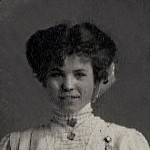 1923, Pancho decided to once again involve himself in Mexican politics, and on July 20, 1923, when he was killed by an assassin, who had probably been hired by the president of Mexico, Álvaro Obregón. When I read that Pancho Villa had been assassinated on this day in 1923, I remembered that Great Uncle John Spare had once had a close encounter with him, and I wondered how he and Great Aunt Min felt when they heard the news. Parral, Chihuahua, Mexico was a long way from Fargo, North Dakota, and a number of years had passed, so maybe they gave it little thought, or maybe they breathed a sigh of relief, knowing what kind of a man he was, and just how close Great Uncle John had come to losing his life that day, along the United States and Mexican Border.
1923, Pancho decided to once again involve himself in Mexican politics, and on July 20, 1923, when he was killed by an assassin, who had probably been hired by the president of Mexico, Álvaro Obregón. When I read that Pancho Villa had been assassinated on this day in 1923, I remembered that Great Uncle John Spare had once had a close encounter with him, and I wondered how he and Great Aunt Min felt when they heard the news. Parral, Chihuahua, Mexico was a long way from Fargo, North Dakota, and a number of years had passed, so maybe they gave it little thought, or maybe they breathed a sigh of relief, knowing what kind of a man he was, and just how close Great Uncle John had come to losing his life that day, along the United States and Mexican Border.

 Life in the late 1800s was much different from life today, and in many ways, I must say better. It was a more gentle, moral time. I was once again reading through my Great Aunt Bertha Schumacher Hallgren’s journal, and wondering how it can be that every time I look through it, I see a part of the history of my family that I hadn’t noticed before. For a while now, I have wondered why so little is mentioned in the journal about my grandmother, Anna Schumacher Spencer. Of course, the main reason is that by the time Bertha started writing, my grandmother was married and living in Minnesota or Wisconsin. She is mentioned in the younger years, but it was harder to know much about her daily life then, because things like cell phones, free long distance, and internet did not exist. I find it sad in so many ways that they could not stay in closer contact. I wonder if those of us in this day and age really know just how blessed we are, and how very important it is to stay in touch.
Life in the late 1800s was much different from life today, and in many ways, I must say better. It was a more gentle, moral time. I was once again reading through my Great Aunt Bertha Schumacher Hallgren’s journal, and wondering how it can be that every time I look through it, I see a part of the history of my family that I hadn’t noticed before. For a while now, I have wondered why so little is mentioned in the journal about my grandmother, Anna Schumacher Spencer. Of course, the main reason is that by the time Bertha started writing, my grandmother was married and living in Minnesota or Wisconsin. She is mentioned in the younger years, but it was harder to know much about her daily life then, because things like cell phones, free long distance, and internet did not exist. I find it sad in so many ways that they could not stay in closer contact. I wonder if those of us in this day and age really know just how blessed we are, and how very important it is to stay in touch.
Because so many people had begun to move west, and things like towns, churches, and even schools were more scarce then, often, the religious training of the children happened at home. Bertha mentions in her journal that my great grandparents were dissatisfied by the fact that they were only able to attend church a few times a year. Carl and Henriette knew that this was not the kind of upbringing they wanted for their children. Even though they were both devout Lutherans, they knew that their children really needed to be in church…and they did too. It is so easy to slide in one’s faith when the family isn’t getting weekly or even more often, teaching in a church setting. So, Great Grandpa sold the quarter section of land that they owned, and purchased 320 acres just three miles east of Lisbon, North Dakota. Bertha remarks that this was a nice home with one of the few bathrooms in the country, and an artesian well. It must have been like moving into a castle. We take such things for granted these days. They did not.
The artesian well helped to form a ten acre lake, which my grandfather, Allen Spencer later stocked with catfish. Great Grandpa Carl Schumacher built a safe flat bottom boat for the younger children, so they could all enjoy the lake. This was a time of joy and happiness for the family. Life was changing, the children were growing up and moving out on their own, and new babies were coming too. Times were getting easier  with new inventions every day designed to make life easier. Nevertheless, the problem of distance remained. I’m sure that Bertha would have written more about her older siblings families, had she had the opportunity to know them better. As a writer myself, I can relate to that. There are family members about whom it is more difficult to write, because I am not around them often. There are others about whom I know much, and so writing is easy. Nevertheless, if I write about them or not, they are all dear to me and in my thoughts often. I am, however, grateful to Bertha for her writings and the insight it has brought to me. Bertha has been an inspiration and a blessing to me. Through her writings, I feel like I know people I never met, and that is a limitless gift. It just keeps on giving.
with new inventions every day designed to make life easier. Nevertheless, the problem of distance remained. I’m sure that Bertha would have written more about her older siblings families, had she had the opportunity to know them better. As a writer myself, I can relate to that. There are family members about whom it is more difficult to write, because I am not around them often. There are others about whom I know much, and so writing is easy. Nevertheless, if I write about them or not, they are all dear to me and in my thoughts often. I am, however, grateful to Bertha for her writings and the insight it has brought to me. Bertha has been an inspiration and a blessing to me. Through her writings, I feel like I know people I never met, and that is a limitless gift. It just keeps on giving.
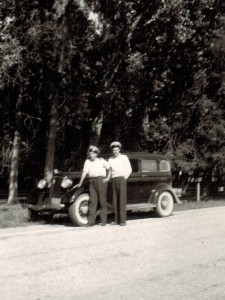 After spending some time in the early spring of 1940, working for the railroad in the car repair department, my uncle, William Malrose Spencer, decided the work was not for him. He quit the job that paid him 38¢ an hour…an amount that made every kid in Holyoke, Minnesota green with envy. With some of the money he had made, he purchased a 1934 Plymouth for which he paid $65.00. I’m sure that was a lot of money to pay for a car back then, but today, we would not get much of a car for $65.00. Nevertheless, in 1940, $65.00 bought my uncle a car that was only six years old, and that is truly amazing. No wonder the kids in town were envious of my Uncle Bill’s great job. At 18 years of age,
After spending some time in the early spring of 1940, working for the railroad in the car repair department, my uncle, William Malrose Spencer, decided the work was not for him. He quit the job that paid him 38¢ an hour…an amount that made every kid in Holyoke, Minnesota green with envy. With some of the money he had made, he purchased a 1934 Plymouth for which he paid $65.00. I’m sure that was a lot of money to pay for a car back then, but today, we would not get much of a car for $65.00. Nevertheless, in 1940, $65.00 bought my uncle a car that was only six years old, and that is truly amazing. No wonder the kids in town were envious of my Uncle Bill’s great job. At 18 years of age, 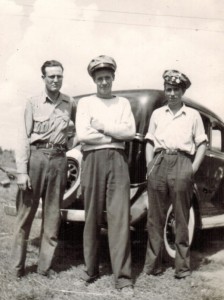 he must have seemed quite grown up.
he must have seemed quite grown up.
After leaving the railroad, Uncle Bill returned home in early June…just in time to make hay, which took most of the month of June. Toward the end of June, Uncle Bill decided to head out to North Dakota to work in the harvest fields out there. Although he was only 16 years of age, my dad, Allen Lewis Spencer and their friend, Bob Croft decided to go along. So, they loaded up in Uncle Bill’s 1934 Plymouth and headed out. Their plan was to work in different harvest ready fields along their way.
This all seems like an easy money scheme, until you think about the fact that this trip was made during the pre-combine years. At that time, the grain was cut with a binder and then hauled to the threshing machine, with horses and wagons. Of course, all this was 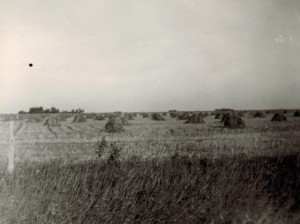 done in the heat of the day, and the men didn’t really wear tank tops and shorts back then. They simply sweated it out. The work was not easy either. There was a lot of bending, lifting, loading, and unloading. They worked liked dogs from sun up to sun down, but that was just the way things were done back then.
done in the heat of the day, and the men didn’t really wear tank tops and shorts back then. They simply sweated it out. The work was not easy either. There was a lot of bending, lifting, loading, and unloading. They worked liked dogs from sun up to sun down, but that was just the way things were done back then.
The guys spent the rest of that summer in the fields of North Dakota, before returning home when the harvest was done. Uncle Bill says that the trip was quite the adventure, but they made a little money while they were at it, so it was worth it in the end.
 Few things can bring a parent to their knees in prayer faster than a sick child…especially when the situation is very serious. This was the position my niece, Susan Griffith and her husband, Josh found themselves in when their younger daughter, Kaytlyn became ill when she was just 18 months old. Kaytlyn was running a fever of 104.5° for most of the morning, nothing Susan did seemed to have much effect on the fever. Susan knew she had to get more help, so she took her to Urgent Care. The physician at Urgent Care, sent them to the Emergency Room at the hospital immediately. The doctors took blood, ran tests, gave her something to bring down the fever, and told Susan to keep a close eye on Kaytlyn, and bring her back if anything got worse. When they left the hospital, Kaytlyn’s fever was at 103°.
Few things can bring a parent to their knees in prayer faster than a sick child…especially when the situation is very serious. This was the position my niece, Susan Griffith and her husband, Josh found themselves in when their younger daughter, Kaytlyn became ill when she was just 18 months old. Kaytlyn was running a fever of 104.5° for most of the morning, nothing Susan did seemed to have much effect on the fever. Susan knew she had to get more help, so she took her to Urgent Care. The physician at Urgent Care, sent them to the Emergency Room at the hospital immediately. The doctors took blood, ran tests, gave her something to bring down the fever, and told Susan to keep a close eye on Kaytlyn, and bring her back if anything got worse. When they left the hospital, Kaytlyn’s fever was at 103°.
Taking Kaytlyn home proved to be a very bad idea. By the time they got home, Kaytlyn’s tongue was swelling, making it difficult to breathe. Susan immediately took her back to the 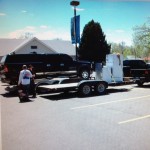 Emergency Room. The doctors gave her an anti-swelling medication and said more tests were needed to determine the problem. They did a spinal tap, which is among one of the scariest test imaginable for a worried mom. Then they took X-rays and more blood. Still they had no answers. Kaytlyn’s fever was still fluctuating between 103° and 104°. They decided to keep her overnight, and it was going to be a long night for Susan…especially since Josh was working in North Dakota.
Emergency Room. The doctors gave her an anti-swelling medication and said more tests were needed to determine the problem. They did a spinal tap, which is among one of the scariest test imaginable for a worried mom. Then they took X-rays and more blood. Still they had no answers. Kaytlyn’s fever was still fluctuating between 103° and 104°. They decided to keep her overnight, and it was going to be a long night for Susan…especially since Josh was working in North Dakota.
Because the hospital in Powell is small, Susan and Josh decided that they wanted to take Kaytlyn to Billings, Montana. The doctors were very much against the idea, but after a while, they consented, provided they went by ambulance. Susan rode with Kaytlyn in the ambulance, and Josh left North Dakota, headed for Billings. Josh’s mother went to their house to get some clothes for Susan and Kaytlyn. Susan’s sister, my niece, Machelle Moore, picked Susan’s other daughter, 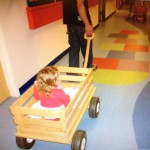 Jala up from school, and kept her overnight…unheard of for Jala on a school night, probably causing her to worry too.
Jala up from school, and kept her overnight…unheard of for Jala on a school night, probably causing her to worry too.
The ride to Billings seemed to take hours, but finally, Kaytlyn was admitted to the Pediatric Unit at Saint Vincent’s Health Care…it was 11pm…a horribly long day. Josh’s mother made sure Susan and Kaytlyn got to the room, and then had to head back to Powell. Josh was still en route to Billings from North Dakota, but Kaytlyn seemed to be doing better now, and her fever had dropped to 102°. She was finally able to sleep, but for Susan, there was nothing to do but sit and think. It occurred to her how blessed they had been, that they had never had to bring their children to a hospital before. Still, they were there now, and she didn’t know what was wrong yet.
Nothing is worse for a parent than sitting in a hospital, wondering if they are going to lose their child. Susan finally dozed off at some point before Josh arrived…from pure exhaustion. She awoke to the phone ringing. It was Josh. He had made it to Billings, but his truck broke down  on the interstate. Someone helped him get it off the road, and a highway patrolman gave him a ride to the hospital. I can imagine how Susan felt when Josh arrived…like falling to pieces. She needed someone to hold her together, and thankfully, Josh was finally able to be there. Pure relief rained over her. The morning brought more relief, when the doctor said it was Tonsillitis. They recommended that her tonsils be removed in a month or so, and sent them home. They went home with thankful hearts. Their baby girl was still with them, and they knew just how blessed they were. They would never forget their miracle. Today Kaytlyn is 6 years old. Happy birthday Kaytlyn!! Have a wonderful day!! We love you!!
on the interstate. Someone helped him get it off the road, and a highway patrolman gave him a ride to the hospital. I can imagine how Susan felt when Josh arrived…like falling to pieces. She needed someone to hold her together, and thankfully, Josh was finally able to be there. Pure relief rained over her. The morning brought more relief, when the doctor said it was Tonsillitis. They recommended that her tonsils be removed in a month or so, and sent them home. They went home with thankful hearts. Their baby girl was still with them, and they knew just how blessed they were. They would never forget their miracle. Today Kaytlyn is 6 years old. Happy birthday Kaytlyn!! Have a wonderful day!! We love you!!
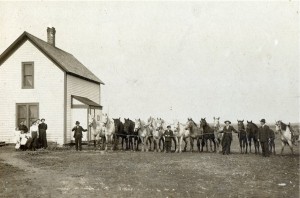 I have heard quite often about a trip that my great grandfather, Carl Schumacher took back to the old country…Germany. As far as I know it was the only trip he ever took back there to see his family and also spend some time with my great grandmother, Henriette’s family. The trip was taken in 1907, when my Great Aunt Bertie was just 8 years old. Grandpa wanted to show his family that he was doing well, as was his family, and show them his family, since they had never met them. He had a picture that was taken in front of the house with the women standing there, and the 14 horses they owned at the time along side. The men were holding the horses, and at the end of the line was Albert “trying to hold down” his horse, Beauty, which only he and Mina dared to ride. As it turned out, his family thought that his family must be rich, to own so many horses. They thought it was the right decision to move to America. They must have thought it was easy to get rich in America, when in reality, they weren’t wealthy. The family had what they had because of hard work and a little frugality.
I have heard quite often about a trip that my great grandfather, Carl Schumacher took back to the old country…Germany. As far as I know it was the only trip he ever took back there to see his family and also spend some time with my great grandmother, Henriette’s family. The trip was taken in 1907, when my Great Aunt Bertie was just 8 years old. Grandpa wanted to show his family that he was doing well, as was his family, and show them his family, since they had never met them. He had a picture that was taken in front of the house with the women standing there, and the 14 horses they owned at the time along side. The men were holding the horses, and at the end of the line was Albert “trying to hold down” his horse, Beauty, which only he and Mina dared to ride. As it turned out, his family thought that his family must be rich, to own so many horses. They thought it was the right decision to move to America. They must have thought it was easy to get rich in America, when in reality, they weren’t wealthy. The family had what they had because of hard work and a little frugality.
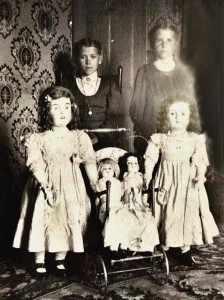
In all, my great grandfather would spend three months in Germany. That is a long time to be away from his family, but it made perfect sense, because getting there was not a quick trip in itself. Traveling by ship both ways was a slow mode of travel, so it made no sense to go if you weren’t going to stay a while. Upon his return, my Great Aunt Bertie went off by herself for a few minutes. She needed to cry a little for the joy of having him back. But while she needed a little cry to release the pent up loneliness she had been feeling, she was also very excited about the things he brought with him. The family back in Germany wanted to send some gifts back for the family with him, and they were magnificent. While Bertie only tells of the things she and Elsa received, I can imagine that the gifts for the rest of the family were equally magnificent.
Nevertheless, everyone was excited about the dolls that were sent for Bertie and Elsa. The dolls were three feet tall with human hair. They were beautifully dressed in pale blue dresses made by a dressmaker in Germany. They had little cloth bracelets of lace at their wrists, and their hands moved separately from the arms. The dresses were trimmed everywhere with tucks and lace of pale blue. On their feet were baby stockings and real leather slippers. The dolls were so big that Bertie and Elsa really couldn’t easily play with them, so they were given 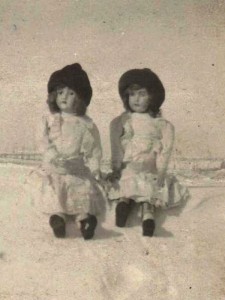 a special place in the parlor, where everyone could see and enjoy their beauty. When Bertie and Elsa moved to Colorado, many years later, they were unable to take the dolls with them, so they donated the dolls to a Crippled Children’s Home near Jamestown, North Dakota. The dolls were completely renovated and beautifully dressed, and were locked in a glass case for viewing only.
a special place in the parlor, where everyone could see and enjoy their beauty. When Bertie and Elsa moved to Colorado, many years later, they were unable to take the dolls with them, so they donated the dolls to a Crippled Children’s Home near Jamestown, North Dakota. The dolls were completely renovated and beautifully dressed, and were locked in a glass case for viewing only.
I have to wonder if my great aunts were a little sad when the donated their dolls, for while they were children anymore, the dolls were such a special gift, and had come from so far and with so much love that it must have been like leaving a little bit of their hearts behind too. Still, they must have brought much joy and happiness to the children who got to look at them.
 My Great Uncle John Clark Spare, who was my Great Aunt Mina Schumacher’s husband, had a lengthy career in the Army, that began when he enlisted in the North Dakota National Guard on June 30, 1916 at the tender young age of 17 years. At that time he was assigned to the Rio Grande River Border Patrol along the United States-Mexican Border, at Mercedes, Texas. In all, he served off and on from 1916 to 1943. When he wasn’t off fighting in wars, he was able to receive training in the Highway Engineering branch of Civil Engineering at Iowa State College. Following his education, he was assigned to field work, which is where I believe he began his initial association with the Indian tribes in the area, and would eventually change his life forever.
My Great Uncle John Clark Spare, who was my Great Aunt Mina Schumacher’s husband, had a lengthy career in the Army, that began when he enlisted in the North Dakota National Guard on June 30, 1916 at the tender young age of 17 years. At that time he was assigned to the Rio Grande River Border Patrol along the United States-Mexican Border, at Mercedes, Texas. In all, he served off and on from 1916 to 1943. When he wasn’t off fighting in wars, he was able to receive training in the Highway Engineering branch of Civil Engineering at Iowa State College. Following his education, he was assigned to field work, which is where I believe he began his initial association with the Indian tribes in the area, and would eventually change his life forever.
However that may have happened, John did end up being considered a person the tribes would listen to, and because of that, he was invited on November 11, 1936 to the Standing Rock Indian Reservation near Cannonball to give a speech at the American Legion Post Rally. Later that day, an Indian named White Eagle told him that an old Indian named Walking Cloud liked his speech very much and wanted to meet him. As it turned out, Walking Cloud had recently lost his son. He wanted to adopt John in his place…quite an honor. Over the remainder of that year and into the next, Walking Cloud and his wife, Mary visited the Spare home frequently. I would guess that they were getting to know each other better.
The ceremony was set for July 4, 1937 at Cannonball, during the first celebration of the Sundance since it was abolished in 1892 because the government felt the ritual was too torturous. For those who don’t know, the ritual entailed raising a huge pole with leather thongs tied to the top…two for each dancer. Incisions were made in two places on the braves chests and the ends of the thongs knotted into them. The dancers then danced around the pole until the thongs ripped from their chest, as a way of displaying their bravery. The Sundance was able to be revived in 1937, because most of the older Indians had died, and the younger ones weren’t very interested in having the torturous dance kept as part of the ceremony after all 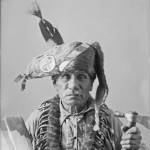 that time.
that time.
John Clark Spare was made Walking Cloud’s son during that ceremony, and given a Chief’s headdress made with genuine eagle feathers, which would be impossible now. Attached to the headdress was a long trailer of brilliant feathers running from the base of the neck to the ground. Trailers were worn by chiefs only on special occasions, Mina had fashioned breeches and a coat of pure white leather for him. Her work was exquisite, especially the bead work that covered most of the garment. After his adoption, John studied Indian lore more than before, and the collecting of Indian artifacts became his beloved hobby.
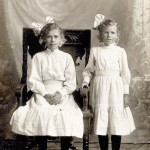 These days, with most towns having multiple schools, our school days are often taken for granted, and even viewed…by many students and boring, grueling, and basically something to get through and over with, so they can move on to real life. But, schooling in the old west, and even into the mid 1900’s wasn’t always such an easy thing to accomplish. As our nation grew, and people spread out across its vastness, schools were one thing in short supply. Many parents had to home school their children, which is becoming more of a luxury item these days, because with home schooling, comes the loss of one income, and many people can’t or don’t want to make it on one income.
These days, with most towns having multiple schools, our school days are often taken for granted, and even viewed…by many students and boring, grueling, and basically something to get through and over with, so they can move on to real life. But, schooling in the old west, and even into the mid 1900’s wasn’t always such an easy thing to accomplish. As our nation grew, and people spread out across its vastness, schools were one thing in short supply. Many parents had to home school their children, which is becoming more of a luxury item these days, because with home schooling, comes the loss of one income, and many people can’t or don’t want to make it on one income.
When my great grandparents, Carl and Henriette Schumacher moved their family from Minnesota to North Dakota, they were quite a way from the school, but they saw the importance of educating their children. The family spoke German at home, and when the older children started school, the teachers made fun of their lack of the knowledge of the English language. Henriette immediately set out to change that. German would no longer be spoken in the home. The whole family would make the switch to English. The distance to school was a big problem, but Carl made sure that his children were there…no matter what.
That worked well for the older children, but at that time in history, many children didn’t go to school after the 6th grade, and some quit sooner. So, when Bertha and Elsa, the youngest children were in school, a new problem presented itself. The school was nearer to them now, but often there were not enough students to warrant keeping it open, thus their education became hap-hazard. That is not to say that they did not get their education, because they did, and even went on to college. Theirs was just a little bit different than their older siblings.
Bertha tells of going to school in the small school, with very few students, but she also talks of the year they were home schooled but their oldest sister, my future grandmother, Anna. She talks of the time that they spent in a small house in Lisbon, with Mina staying with them so they could go to school. And of course, there were the times they went by horse and buggy into school. Those were hard times, and I have to wonder how the girls kept up with the other students, and were able to continue on to the high school in Lisbon. It’s not that I wondered about my grandmother’s ability to teach, but with little or no regulation, how did the school in Lisbon know anything about their prior education.
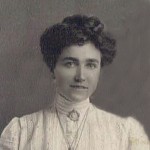
I suppose they had to take some kind of test or visit with the teacher for a time so they could determine where they were in their education, and therefore could be placed in one grade or another. I know that often in homeschooling situations today, the students are ahead of their age group, but I still wonder if that was the case then, because their materials were few and there was really no clear way to know if the teacher was keeping up with other classes for their pupils’ age groups. Those must have been hard and confusing times for Bertha and Elsa. Nevertheless, they both finished school, like their older siblings, and went on to college, but their education was definitely at The School of Hap-Hazard.
 It would be hard for most of us to imagine a world where we got to go to town only once a year, and yet that was the way of things back when my Great Aunt Bertie Schumacher was a little girl. The Schumacher family moved from Minnesota to a place 8 miles from Lisbon, North Dakota, and the school house was 3 miles from where they lived. Bob and I, in our many evening walks have walked 8 miles at a time, but not in the winter, and since that walk takes us 2 hours, I can’t say that it would be feasible as a way to go to town for groceries, because then there is that walk back loaded down with groceries. Just the thought of 4 hours of walking in the winter cold is enough to make me cringe.
It would be hard for most of us to imagine a world where we got to go to town only once a year, and yet that was the way of things back when my Great Aunt Bertie Schumacher was a little girl. The Schumacher family moved from Minnesota to a place 8 miles from Lisbon, North Dakota, and the school house was 3 miles from where they lived. Bob and I, in our many evening walks have walked 8 miles at a time, but not in the winter, and since that walk takes us 2 hours, I can’t say that it would be feasible as a way to go to town for groceries, because then there is that walk back loaded down with groceries. Just the thought of 4 hours of walking in the winter cold is enough to make me cringe.
Nevertheless, the children needed to be in school, so Great Grandpa Carl Schumacher got up early every morning, to get the horses out and break a trail, then hook up to the sleigh for the 3 mile drive in to the school with his older children, Anna (my grandmother), Albert, and Mina. Aunt Bertie remarks in her journal, that she and Elsa were very glad that they could stay home with their mother. The sleigh was nothing like the more romantic New England cutters we all think about, but was rather a grain wagon box placed on two heavy runners pulled by their sturdiest horses because of all the deep snow the area got. Great Grandma Henriette would bring the older 3 children out to the wagon, and place bricks she had heated by their feet. Then she would wrap them in blankets that even covered their faces to protect them from the bitter cold. In all the time the children went to that school, they were there everyday, unless they were sick. It was by far the best attendance record in the school, and the Schumacher family lived the furthest away from the school. When Aunt Bertie went to school, a place she was not very fond of, she had to force herself to do what she needed to. It was at this time that she met the only teacher that would remain in her memory for the rest of her life. She was beautiful, and well dressed, but it was her graciousness and her love for children that made her the best teacher little Bertie would ever have.
Not long after Bertie started school, the family moved closer to Lisbon, and the school was only a mile away, and much to Bertie’s delight, it had an indoor bathroom. No more running outside to the outhouse in the middle of a freezing cold day and then running back inside in 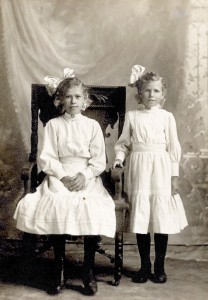 the cold again. Bertie felt like she was attending school in a palace, I’m sure. One day, when her mother had to drive the long distance into town on a very cold winter day, she decided to leave little 4 year old Elsa at the school with Bertie and their brother, Fred for the day. Elsa had never been away from her mother before, and they were very close, so she proceeded to cry. The older children could not console her, and finally a teacher came and took Elsa under her wing, calming her and allowing her and her siblings the peace of knowing that everything was going to be alright. Bertie recalls how it is funny that the memories that really stay in your memory are the ones where someone showed such love and kindness that the memory of it lingered on for years to come. What a lovely way to be remembered. That is something I think I should like to be remembered as. Loving and kind enough that the memory of my acts of kindness and love stay in the memories of those whose lives I might have touched.
the cold again. Bertie felt like she was attending school in a palace, I’m sure. One day, when her mother had to drive the long distance into town on a very cold winter day, she decided to leave little 4 year old Elsa at the school with Bertie and their brother, Fred for the day. Elsa had never been away from her mother before, and they were very close, so she proceeded to cry. The older children could not console her, and finally a teacher came and took Elsa under her wing, calming her and allowing her and her siblings the peace of knowing that everything was going to be alright. Bertie recalls how it is funny that the memories that really stay in your memory are the ones where someone showed such love and kindness that the memory of it lingered on for years to come. What a lovely way to be remembered. That is something I think I should like to be remembered as. Loving and kind enough that the memory of my acts of kindness and love stay in the memories of those whose lives I might have touched.

